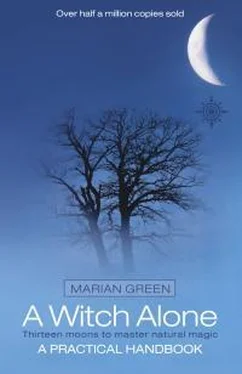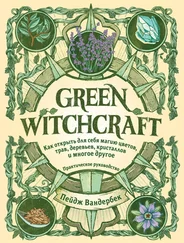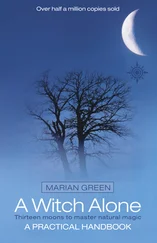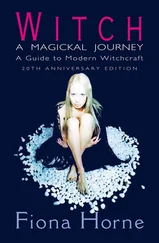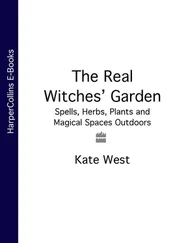1 ...7 8 9 11 12 13 ...51 Another underlying principle of the paganism of witchcraft is the idea that every individual contains a spark of the Creator, manifested as both God and Goddess inside each of us. Those who take up the duties as a New Age priest or priestess will eventually learn, directly from those deities within, how to handle their powers, speak with their voices, bless with their benediction. It is not something which can be expressed in a book, but has to be learned patiently, by personal dedication and commitment to that path.
It is not an easy option, either, for to serve the Creative Principle is a very hard, heavy and enduring task which, once taken up, cannot be set aside for human reasons. If you work through the exercises, make the effort required to attune yourself with the powers of Nature, interact with the God and Goddess as they may appear to you in dreams and visions then eventually their twin powers within you will awaken.
Some Traditions teach only of either the God or Goddess within, but in reality, because our immortal, reincarnating spirits may be either male or female, there dwells deep within the nature of both sexes. When this is awoken our understanding of relationships, friendships, love and passion is increased immeasurably. It is by working with the God and Goddess within that we may gain much of our magical power, and alongside that the will to control it and the responsibility to use it properly.
If you look at the earlier part of this chapter, you will see which are the main attributes of the God and Goddess as they exist and are available to everyone, and then you may be able to choose those aspects which you most need to invoke in yourself, using your inner God/Goddess force to do this. Gradually you will learn the ancient art of symbolism and magic, wherein a certain sign, number, colour, tree or flower may represent that which you wish to contact, and by its ritual use, or even mental imagination, you will be able to ask clearly for specific help, and receive just that. The rituals and charms, the talismans and spells of the Old Ones were much less sophisticated than the ones some magically-minded witches use today. Both sorts work, but a return to the older, simpler and more natural methods will do no harm.
Exercises
You may already be encountering difficulties because you are choosing to redirect your life, and walk an uncommon path, but if you are really intent on walking the Old Way you will need to persevere.
Again, the second Moon requires you to carry on research as well as looking at what is going on in the community around you. Look at every tree you see, take every opportunity to witness or join in local well-dressing, bonfire processions or morris dances. They all contain hidden jewels of our forgotten pagan heritage. Also find time to be quiet every day, meditating if you know how, or at least mulling over what you have read, what you have written in your Book of Illumination, and all the ideas flitting like bats through your mind, by day and night.
Here are some more things to do in your second Moon of training. Consider what it means to have a Goddess and a God with many forms. Also read and think hard about religious experience, what it should do or may have done for you in the past. What would you consider a mystical experience to be like?
Divide one page of your Book of Illumination into two columns and write ‘The Goddess’ at the top of one column, and ‘The God’ at the top of the other. Begin by writing in each pairs of names, attributes, symbols or titles, matching the Goddess as Moon with the God as Sun, for example. Sometimes you have three Goddess attributes and only one God name, but you will gradually find balances. You should be able to continue this list through several pages, especially if you take some of the classical deities as well as the local ones.
Sit silently with your eyes closed, relax and then ask the Goddess to show herself to you. See what happens after a few minutes, and write it in your Book. On another occasion ask for the God to appear, and again record what you see or experience. Then ask to see them both.
Draw a large circle (round a plate) and enter the Festivals, taking the top to be north. In segments, add symbols, colours, flowers and all the other things you personally associate with each feast. If you don’t know very much yet, rather than copying from this book, add more after each festival passes.
Look at poetry, more or less at random, in bookshops or the library. Try to devise your own brief invocations for the elements that surround your circle. Work with the basic powers rather than elaborate god-names which you may not fully understand. Try to open up your emotions rather than treating this as an intellectual exercise.
Walk about out of doors and visit somewhere that you would consider sacred, be it religious site, highest local hilltop, ancient monument, old tree or spring of fresh water. Try to discover how and why it feels different to any similar ‘non-sacred’ place. Relax with your eyes closed and stretch your senses.
Here are a selection of books to look out for: Robert Graves, The White Goddess (Faber)
Marian Green, A Harvest of Festivals (Longman, out of print)
Marian Green, Natural Witchcraft (Thorsons)
Miranda Green, The Gods of the Celts (Alan Sutton) William James, Varieties of Religious Experience (Penguin)
Caitlin Matthews, The Elements of the Goddess (Element Books)
Don’t expect any of these books to be a very easy read, nor do any of them explain exactly about the Old Village Witch or Cunning Man because there is very little written about them, except as parts of learned studies by folklorists, but they are a treasure house of useful ideas.
3 - The Sacred Cycles
To every thing there is a season, and a time to every purpose under heaven a time to be born, a time to die a time to plant, and a time to reap, a time to kill, and a time to heal, a time to weep, and a time to laugh, a time to mourn, and a time to dance, a time to keep, and a time to cast away, a time to keep silence, and a time to speak, a time to love, and a time to hate a time of war, and a time of peace
(Old Testament Ecclesiastes)
The land on which we live is subject to the cycles of the seasons. To our ancestors every part of the year had its tasks, its unrewarded efforts and its harvests, its times of dearth and glut, success and failure, plenty or famine. What happened to the crops or the fertility of the livestock was seen to be partly in the hands of the farmers with their inherited wisdom, and partly in the gift of the Earth Mother. It is for this reason that, from the earliest known religious activities of humankind upon Earth, offerings, rituals, celebrations and acts of propitiation seem to have been made in her name.
Most of the oldest identifiable religious objects appear to be in the form of fat women, usually described by archaeologists and others as primitive Earth Mother figures, or Mother Goddess statues.
As the understanding of the varied nature of the Goddess evolved these became more elaborate, showing not just the fat belly and ample breasts, but beautiful headdresses, armlets which are sometimes snakes, flounced skirts or elegant necklaces and breast ornaments. All over the world such ancient representations are to be found, echoing the most advanced art forms of their age. Some are painted on cave walls or roofs, some are carved from soft stone, moulded in clay, woven from reeds, cast from precious metals and decorated with jewels. Each individually expresses the artist’s prayer, of thanksgiving or supplication, or worship of a specific aspect of the Great Goddess, as seen in his or her age.
Recent ideas about ancient structures, mounds, earthworks, ‘burial mounds’ and reshapings of the landscape seem to indicate that even on this vast scale, effigies of a Mother Goddess, Birth-Giver, Life-Taker, have been set out among the hills. Many of these artificial constructions seem to echo the shape of the womb, or the pregnant and fecund belly of she who brings forth young. Many of the shapes associated with the Goddess from earliest times include circles, holes, the ‘vesica piscis’, or the crescent of the moon’s shifting outline. Serpents and many flowers appear as symbols of the life force of the First Mother, and many springs, wells and fountains are sacred to her power.
Читать дальше
Конец ознакомительного отрывка
Купить книгу
